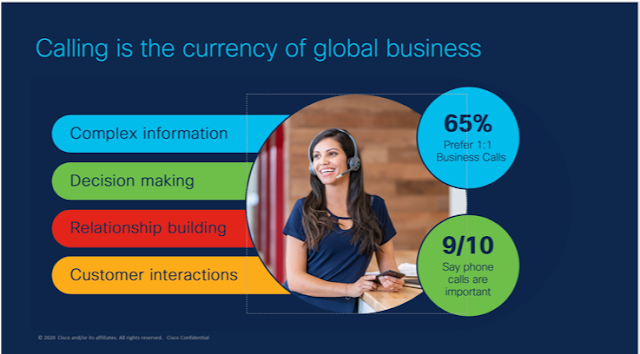However, various challenges stand in the way of enabling this today:
◉ Geographically remote and distributed assets – The location of IoT assets vary from a dense urban area like traffic intersections to remote area like gas and water distribution where cellular connectivity is scarce
◉ Heterogeneous environments – IoT assets come from various manufacturers and no two manufacturers speak the same protocol or handle the same data model
◉ Multiple consumers of data – As the need for IoT data grows and the number of applications that can leverage data increases, making sure there are proper control and governance policies before the data leaves the network is an ever-growing challenge
◉ Complexity – Current approaches are often sub-scale and require custom software and integration of multi-vendor technologies that are overwhelmingly complex to deploy and manage
Cisco recently announced a new offering for IoT edge called Cisco Edge Intelligence. Cisco Edge Intelligence is a new IoT data orchestration software that extracts, transforms and delivers data of connected assets from edge to multi-cloud destinations with granular data control. It is a software service deployed on Cisco’s IoT Gateway (GW)/ Networking portfolio for easy, out-of-the–box deployments.
Cisco recently requested 451 research to conduct an analysis on the top issues with IoT deployment and the role of IoT edge. The research report helped validate the hypothesis of the problem and the solution that Cisco Edge Intelligence is addressing.
Cisco is currently conducting early field trials/pilot projects with select customers such as voestalpine, Port of Rotterdam, AHT Cooling (Daikin), National Informatics Center – India and many more across roadways, water quality/distribution and remote industrial asset monitoring. Cisco Edge Intelligence will be available for public in 2Q CY 2020. Primary value proposition of Cisco Edge Intelligence is as follows:
Out-of-the-box solution
Cisco Edge Intelligence comes out of the box working on most of Cisco’s IoT GW portfolio for plug–and–play operations, which is configured and managed using a SaaS or on-prem solutions. User experience is built grounds up after studying various industry user personas. Cisco Edge Intelligence has simplicity built into its core and makes data extraction, transformation, governance and delivery to its applications as easy as a click of a button. It can be deployed across thousands of gateways from a centralized location without having to worry about the underlying network configurations.
Pre-integrated data extraction for specific industries
Cisco has learnt that the hardest and challenging aspect of IoT deployments is consistently extracting data from various greenfield and brownfield assets. Cisco Edge Intelligence comes pre-integrated with a curated set of asset/device connectors based on specific industries that allow customers to onboard IoT assets seamlessly. Further, it provides an ability for customers to add meta data that helps normalize data across vendors.
Convert raw data to intelligent data
Based on feedback received, Cisco has embraced tools for development and debugging which are widely accepted by the community. Cisco Edge Intelligence provides scripting engines that allow customers’ and partners’ developers to develop scripts that can convert raw data to intelligent data. The scripts could be simple filtering, averaging, thresholding of data or complex analytical data processing for cleaning and grooming of data. These tools enable developers to remotely debug on a physical IoT GW and deploy with a click of a button from the same development interface.
Granular data governance
As the promise of IoT is delivered with every small thing being connected, and as the number of applications that can make sense of the IoT data increase, the problem of N*M arises. ‘N’ things being source of data from multiple things from different manufacturers and ‘M’ applications being destination of data from multiple applications from different vendors. The goodness IoT brings, could become a chaos to deal with, if not addressed ahead of time.
As this data deluge erupts, Cisco Edge Intelligence provides a fundamentally strong and holistic data control from the point of ingestion to consumption in a non-overwhelming way.
Pre-integrated with growing eco-system
The last and a key step necessary to deliver data to applications requires Cisco Edge Intelligence to be integrated with a growing set of platforms and applications. It is currently pre-integrated with one of the leading cloud providers and other platform/on-prem providers such as Software AG and Quantela. Cisco Edge Intelligence also supports standards based MQTT and encourages partners who are interested in working with Cisco to leverage the same. Cisco will continue to grow this ecosystem of IoT platform/application partners.
“When customers take advantage of both Cisco’s new Edge Intelligence running on Cisco’s GW and Software AG’s Cumulocity IoT running in data center or cloud, they will be able to bring IoT asset data from edge to cloud quickly and seamlessly,” said Yasir Qureshi, VP, IoT and Analytics at Software AG. “Keeping IoT simple with little or no coding has been a key to successfully unlocking the business value of the IoT on either edge or cloud-based applications.”
Cisco Edge Intelligence is a big step for Cisco IoT towards bridging the gap from where data is generated to where it is consumed. It offers an out–of–the–box, plug–and–play solution for everything in between.
















